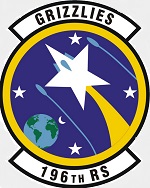Hobby Master HA3115 USAF Convair F-102A Delta Dagger Interceptor - 61363, 196th Fighter Interceptor Squadron "Grizzlies", 163rd Fighter Interceptor Group, Van Nuys, California, 1970s (1:72 Scale)
"The Deuce"
- Nickname for the Convair F-102 Delta Dagger
 The Convair F-102 Delta Dagger is an interceptor aircraft designed and produced by the American aircraft manufacturer Convair. A member of the Century Series, the F-102 was the first operational supersonic interceptor and delta-wing fighter operated by the United States Air Force (USAF).
The Convair F-102 Delta Dagger is an interceptor aircraft designed and produced by the American aircraft manufacturer Convair. A member of the Century Series, the F-102 was the first operational supersonic interceptor and delta-wing fighter operated by the United States Air Force (USAF).
The F-102 was designed in response to a requirement, known as the 1954 Ultimate Interceptor, produced by USAF officials during the late 1940s. Its main purpose was to be the backbone of American air defenses and to intercept approaching Soviet strategic bomber fleets (primarily the Tupolev Tu-95) during the Cold War. The aircraft was designed alongside a sophisticated fire-control system (FCS); however, a simplified unit had to be adopted due to development difficulties. It used an internal weapons bay to carry both guided missiles and rockets. On October 23rd, 1953, the prototype YF-102 performed its maiden flight; however, it was destroyed in an accident only nine days later. The second prototype allowed flight testing to resume three months later, but results were disappointing: as originally designed, the aircraft could not achieve Mach 1 supersonic flight.
To improve its performance prior to quantity production commencing, the F-102 was redesigned, its fuselage was reshaped in accordance with the area rule while a thinner and wider wing was also adopted. Flight testing demonstrated sufficient performance improvements for the USAF to be persuaded to permit its production; a new production contract was signed during March 1954. Following its entry to USAF service in 1956, the F-102 promptly replaced various subsonic fighter types, such as the Northrop F-89 Scorpion, in the interceptor role. The F-102C tactical attack model, equipped with several improvements, including a more powerful engine and Gatling gun, was proposed but not ultimately pursued. A total of 1,000 F-102s were built, both for the USAF and a handful of export customers, including the Hellenic Air Force and the Turkish Air Force.
By the 1960s, USAF F-102s had participated in a limited capacity in the Vietnam War as a bomber escort and even in the ground-attack role. The aircraft was supplemented by McDonnell F-101 Voodoos and, later on, by McDonnell Douglas F-4 Phantom IIs. Over time, many F-102s were retrofitted with infrared search/tracking systems, radar warning receivers, transponders, backup artificial horizons, and modified fire-control systems. Throughout the mid-to-late 1960s, many USAF F-102s were transferred from the active duty Air Force to the Air National Guard, and, with the exception of those examples converted to unmanned QF-102 Full Scale Aerial Target (FSAT) drones, the type was totally retired from operational service in 1976. Its principal successor in the interceptor role was the Mach 2-capable Convair F-106 Delta Dart, which was an extensive redesign of the F-102.
Pictured here is a 1:72 scale rendition of a Convair F-102A Delta Dagger interceptor that was attached to the 196th Fighter Interceptor Squadron "Grizzlies", 163rd Fighter Interceptor Group, then deployed to Van Nuys, California, during the 1970s.
Sold Out!
Dimensions:
Wingspan: 6-1/4-inches
Length: 11-1/4-inches
Release Date: August 2022
 Historical Account: "Grizzlies" - The 196th moved from Norton AFB to Ontario Municipal Airport, California, on January 1st, 1954. In February 1954, it was equipped with North American F-86A Sabre. By July 1955, the transition from the F-51H Mustang to the F-86A Sabre was complete. The squadron was re-designated a fighter interceptor unit with an air defense mission for the Los Angeles area and its mobilization command became Air Defense Command (ADC). With the F-86A, the squadrons began standing dusk-to-dawn alerts, joining its ADC active-duty counterparts. The squadron received newer F-86F Sabres in 1957.
Historical Account: "Grizzlies" - The 196th moved from Norton AFB to Ontario Municipal Airport, California, on January 1st, 1954. In February 1954, it was equipped with North American F-86A Sabre. By July 1955, the transition from the F-51H Mustang to the F-86A Sabre was complete. The squadron was re-designated a fighter interceptor unit with an air defense mission for the Los Angeles area and its mobilization command became Air Defense Command (ADC). With the F-86A, the squadrons began standing dusk-to-dawn alerts, joining its ADC active-duty counterparts. The squadron received newer F-86F Sabres in 1957.
On May 17th, 1958, the 196th was authorized to expand to a group level, and the 163d Fighter-Interceptor Group was established as its headquarters. The 196th FIS was the group's flying squadron, while the 163d Material Squadron, 163d Air Base Squadron, and the 163d USAF Dispensary were activated to support the 196th.
California Air National Guard 196th FIS Convair F-102A Delta Dagger in 1970. This aircraft is now on static display at Clovis Park, California.
ADC upgraded the squadron to F-86H Sabre day interceptors in 1959 and Convair F-102 Delta Daggers in 1965. The F-102 was being phased out of active-duty units in the early 1960s and the 196th was one of the last ANG units to replace their F-86 Sabres. The F-102 aircraft, however, was obsolescent as an interceptor by the time it was received by the 196th. The Delta Daggers soldiered on until the early 1970s when they were retired to the Military Aircraft Storage and Disposition Center at Davis-Monthan AFB.
The unit received two Air Force Outstanding Unit Awards for extended periods ending in 1964 and 1974.


